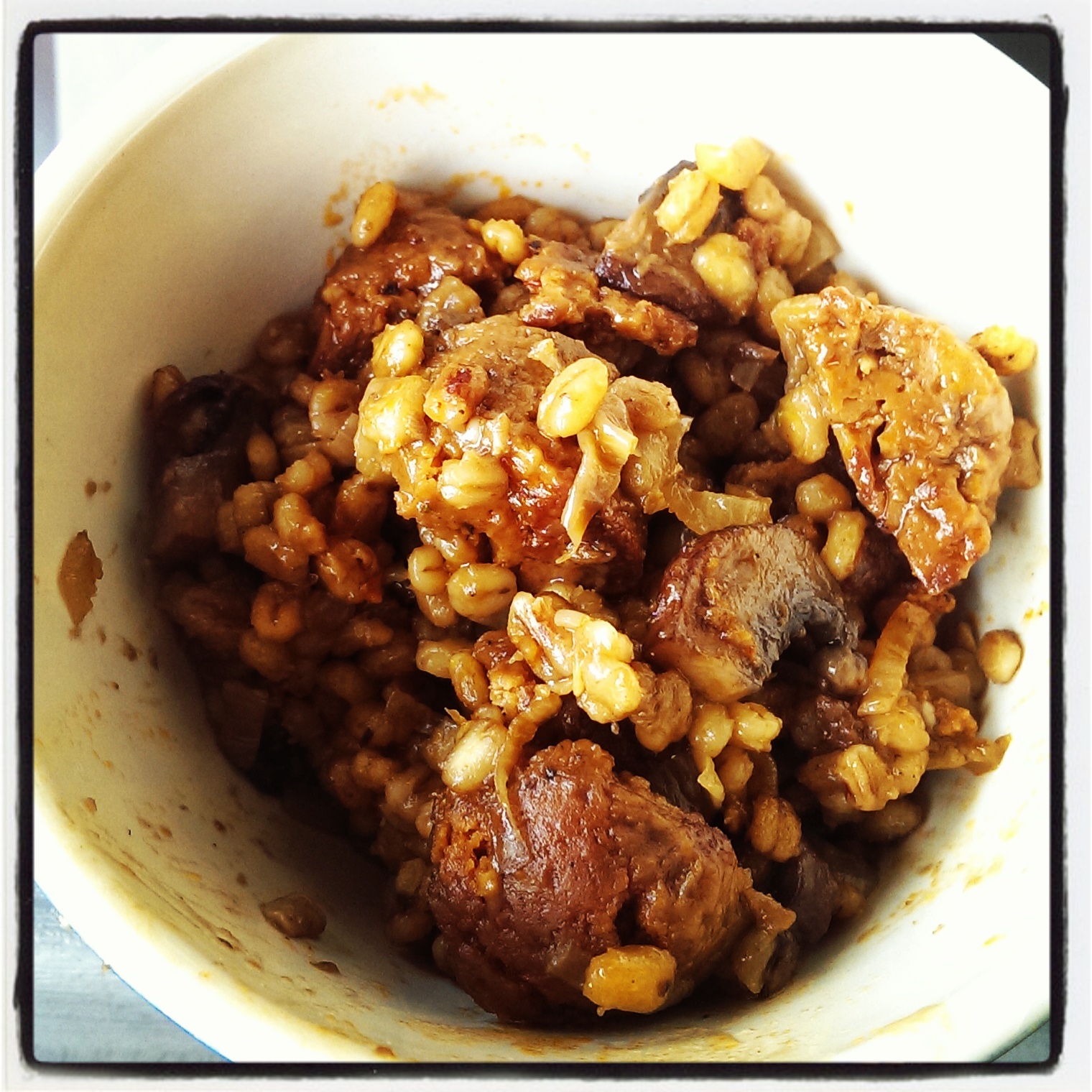I was making a barley risotto the other night when it dawned on me, doesn’t “risotto” mean “rice” in Italian, or at least something rice related? Indeed, it does, making “barley risotto” nonsense, albeit an easy to make and delicious form of nonsense.
Before we go any further and before anybody gets hurt, let me be clear: barley is not gluten-free. If that’s your jam, stick to classic risotto made with rice.
So what should we properly call a dish made in the manner of a risotto (rice slowly cooked in broth) but using barley instead of rice? In Italian, rice is riso and barley is orzo, so it seems that orzotto would be the answer. But wait, you protest, isn’t orzo a pasta? Indeed, not only is orzo also the name of a type of pasta, that pasta is shaped like… grains of rice. If that’s not sufficiently confusing, I must also mention that you can also make a risotto-style dish using orzo pasta in place of rice. I guess that would be orzopastatto or something.
Risotto – or orzotto – is also an excellent leftover disposal system, a dish into which you can put nearly any random food items you have lying around. In that spirit, here is the recipe for last night’s “going out of town soon really should get rid of these leftovers” orzotto. Serves a hungry two. Many searches contributed to the recipe, but this one contributed the most. You can, and should, substitute as needed.
 3 cups mushroom broth
3 cups mushroom broth- 1/2 cup barley
- 2 sprigs of thyme
- 1 yellow onion, about the size of an egg
- 1 really big clove of garlic
- 8 oz of assorted mushrooms, fresh and/or dried
- 1 sausage link – I use Field Roast Grain Meat [vegetarian] sausage links
- 1/4 pound scallops (everything else can be leftovers but these need to be fresh)
- 6-8 oz dry white wine
- a hunk of parmesan cheese
- salt and pepper
- a few tablespoons of butter and/or oil
- Put the broth in a covered saucepan on low heat to simmer. If you’ve got dried mushrooms, put them in with the broth to rehydrate.
- Slice the mushrooms and sausage, dice the onion and mince the garlic. Pull the little leaves off the thyme stems and chop them up a bit. Discard the stems. Taste the wine.
- In a large pan, heat some oil then cook the onions till they’re translucent, then add the barley, stirring it to coat with oil and let it toast a bit, stirring occasionally. Add the garlic.
- When the barley is toasted, add two splashes of wine (one into the pan and one into your mouth) and a ladle or two of the broth. Stir and cook until the barley has absorbed most of the liquid.
- Keep adding broth a ladle at a time and stirring until the barley has absorbed most of the liquid. It’s done when the barley is soft enough to eat but not mushy. You might have broth left over, or you might have to add more liquid. You can do the next two steps in parallel with the barley cooking.
- In another pan, heat butter or oil and cook the mushrooms. If you’ve got dried mushrooms reconstituting in the broth, you don’t need to cook them again, but take them out, slice them, add them to the fresh mushrooms when they’re done.
- You may choose to cook the sausage and scallops in the same pan at the same time as the mushrooms if you’re into that sort of thing. If not, set aside the mushrooms, deglaze with some of the wine, and repeat with the sausage and then the scallops. If you have enough burners, pans and hands, you can do these all at once. Ideally, cook the scallops last and at the end when everything else is done.
- Do not overcook the scallops. If you have overcooked the scallops, toss them down the disposal, pour yourself another glass of wine, call it a mushroom sausage orzotto and deny that there ever were any scallops.
- When the barley is cooked to your liking, add, in no particular order, a few grates of cheese, the thyme, mushrooms, sausage, and scallops, plus salt and pepper to taste. Stir to combine and drink the rest of the wine.
- Serve with more cheese, fresh ground pepper, and a pedantic lecture on risotto, rice, orzo, orzotto, and orzo pasta.

